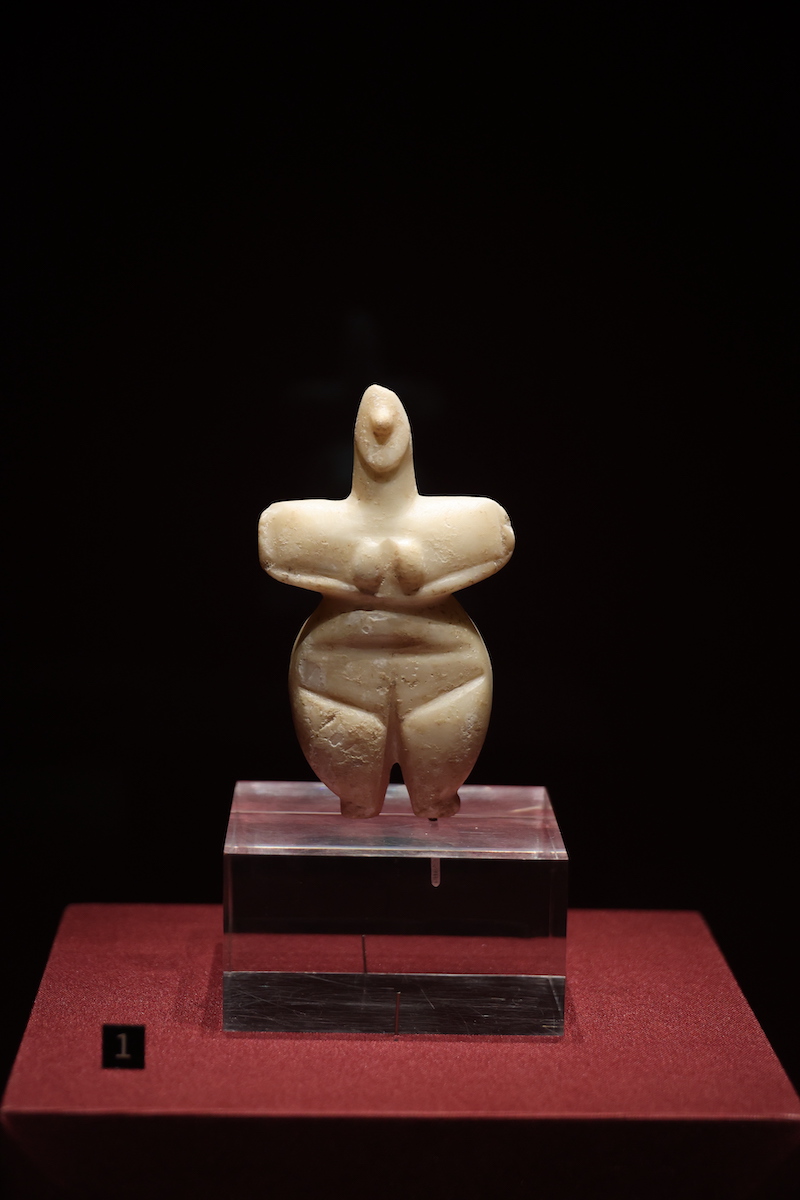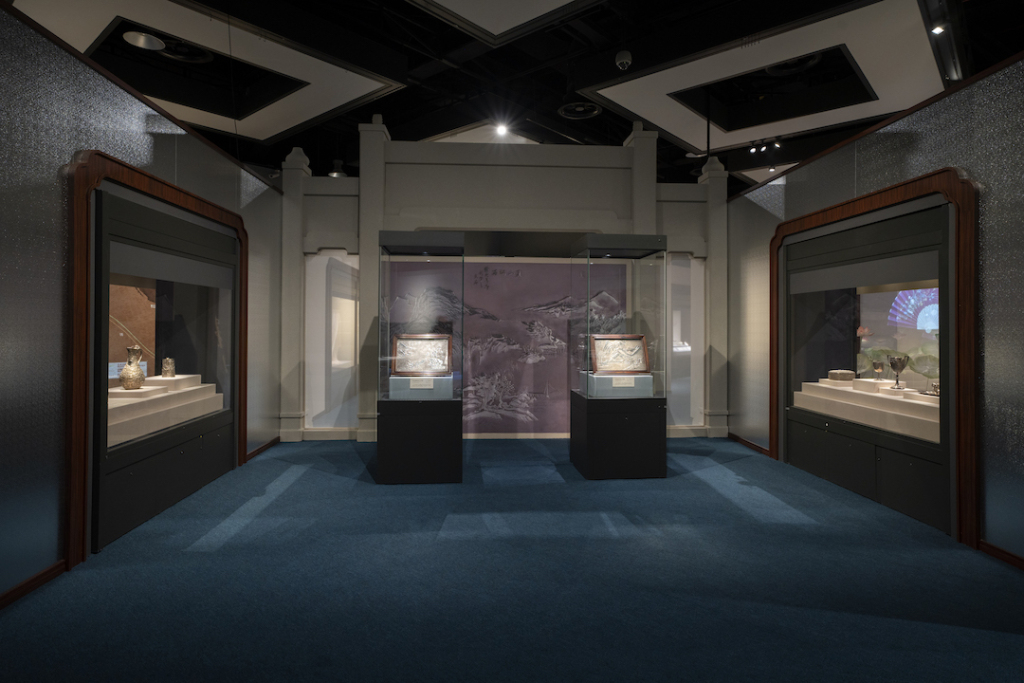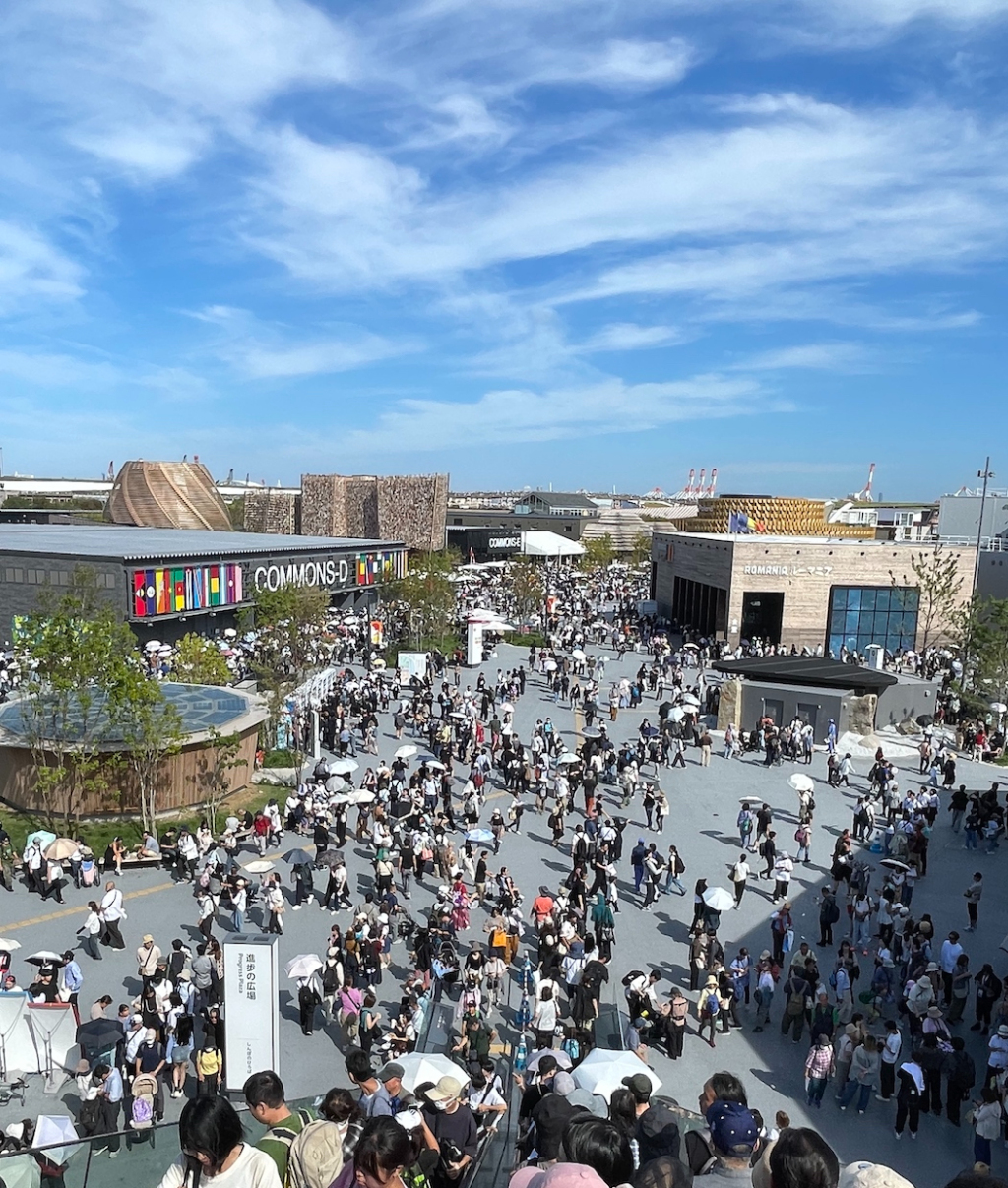
Small statues of Cycladic culture, pottery statues of women with raised arms from Minoan culture, statues of the goddess of wisdom Athena, heads of Alexander the Great endowed with divine qualities, golden masks and gold ornaments glittering with golden light... These exquisite cultural relics that bear witness to the life of the ancient Greeks will be on display at the Shanghai World Expo Museum from July 8. The Paper saw at the scene that as the last stop in China for the international tour project organized by the Ministry of Culture of the Hellenic Republic, the "Greeks: From Agamemnon to Alexander" special exhibition brings together 270 pieces/sets of precious cultural relics from 14 top museums in Greece, showing the evolution of Greek civilization over thousands of years.


Exhibition View
The exhibition "The Greeks" is an international tour project organized by the Ministry of Culture of the Hellenic Republic. Over the past ten years, it has been successfully exhibited in many places such as the United States, Canada, South Korea, and China. According to Liu Wentao, director of the World Expo Museum, according to the original plan, the exhibition will return to Greece after touring the Hunan Museum, Nanjing Museum, and Capital Museum in China. Shanghai is an unplanned stop. "The 'Greeks' landed in the World Expo Museum as expected, and it went through complicated procedures such as funding, agreements, and customs declaration changes. It benefited from the selfless support of the three brother museums in China and the coordination of the Greek Ministry of Culture." "I think the friendship between China and Greece is constantly heating up. Against the background of the friendship between Shanghai and Athens, Greece, such a comprehensive exhibition of Greek civilization can land in Shanghai, which is very worth seeing by Shanghai audiences."

Golden Crown 350-325 BC
Anastasia Balaska, curator of the exhibition department of the Greek Ministry of Culture, said that she was delighted that the "Greeks" exhibition in China ended in Shanghai. Unlike other cities hosting the exhibition, Shanghai can better interpret the concept of the exhibition and the connotation of the encounter between Eastern and Western civilizations. "The exhibition "Greeks" is also a story about the East and the West. The story of Alexander the Great's expedition mentioned in the exhibition brought about the cultural exchange between the East and the West. Shanghai is a place where Eastern and Western cultures blend and converge, and it is a good interpretation of the encounter and integration of Eastern and Western cultures."

Exhibition View
Small statues of people from the Cycladic culture, pottery figures of women with raised arms from the Minoan culture, statues of the goddess of wisdom Athena, and heads of Alexander the Great endowed with divine qualities... Different from previous touring exhibitions in various places, this exhibition of the World Expo Museum takes a different perspective, using "people" as the protagonist to cut into the exhibition narrative and interpreting ancient Greek civilization with the stories of the ancient Greeks.

Exhibition View
Starting from the Neolithic Age and ending with the Hellenistic Age, every time the audience enters a historical unit, they will "meet" a group of Greeks: they are the earliest farmers in Europe and navigators on the Aegean Sea; they are the founders of Western literature and drama, athletes in the first ancient Olympic Games and citizens of the first democratic city-state; they are Agamemnon, the commander of the Greek coalition in mythology, and Alexander the Great, one of the most visionary leaders in history. From these Greek myths and the lives of famous Greeks in history, we can find almost all the elements and characteristics of modern Western civilization.
"We break through the traditional narrative of civilization, focus on the vivid life histories of individuals, and use the stories of the ancient Greeks to tell the history of ancient Greece. We hope to narrow the distance between the audience and ancient Greek culture, and better enter and understand the exhibition." said Hong Lina, curator of "The Greeks: From Agamemnon to Alexander" at the World Expo Museum.

Neolithic woman statue
Entering the exhibition hall, the first display case displays a group of Neolithic exhibits: female statues, pottery and amulets, reflecting the living conditions of the earliest farmers on this land. Among them, this standing female statue is only the size of a palm, with a nose shaped like a bird's beak, arms crossed in front of the chest, big breasts and a big buttocks, which seems to blend abstraction and realism into one. According to the curator, this statue belongs to the naturalistic statues popular in the Neolithic Age in mainland Greece. This kind of small statue is easy to carry and is speculated to be often used in occasions related to fertility and goddess worship rituals.
After seeing the earliest "woman statue" of the Neolithic Age, you can take a look at the Cycladic culture marble statuettes and Minoan culture pottery statues as you walk along the exhibition line.

Cycladic culture figure of a woman with bent arms

Cycladic culture figure of a woman with bent arms
Around 3000 BC, the earliest Greek civilization appeared on the Cyclades Islands, which is known as the Cycladic culture in academia. The representative artifacts of the Cycladic culture are small statues of people, which are unique in form and are outstanding representatives of ancient Greek art. For example, the two "women with bent arms" exhibited in the display cabinet have simple facial shapes, only depicting a protruding nose, an upright body, smooth lines, and arms crossed and bent in front of the chest in a signature pose. It is reported that the Cycladic islanders are particularly good at making such marble statues of people. These statues have a unique abstract style and even became a source of inspiration for 20th-century artists.
After the Cycladic culture, the Minoan civilization on the Greek island of Crete emerged. The Minoan civilization, also known as the Cretan civilization, is one of the early bronze civilizations in the Aegean region of Greece, spanning from about 3000 BC to 1100 BC. The remains of the "Minoan Palace" that have survived to this day bear witness to its former glory.

Pottery statue of goddess with raised arms on display
The exhibition displays a pottery statue of a goddess with raised arms from the late Minoan culture. The goddess wears a special decorated crown on her head and shows a raised-arm posture, which is believed to echo the dance movements of the priestess during sacrificial activities.
Around 1600 BC, a series of kingdoms emerged on the Peloponnese, the most powerful of which was Mycenae. Archaeological evidence suggests that the Mycenaeans may have participated in a war or series of wars that took place in the Trojan region at the end of the Bronze Age. This war later became an important source of Western literature, and the most famous story in Greek mythology is based on it, although its historical authenticity remains to be further verified.

The "Golden Mask of Agamemnon" (replica) on display
The "Golden Mask of Agamemnon" (replica) on display is a representative artifact of this period. This hammered gold mask depicts a bearded man. There are two holes in the mask near the ears, which are used to fix the mask to the head of the deceased. A total of five masks were found in grave circle A, and only this mask vividly reflects the face of the deceased. Schliemann believed that the owner of the mask was Agamemnon, so he called it the "Golden Mask of Agamemnon". In fact, this mask belonged to a Mycenaean king. The replica itself is also a work of art, made by Swiss artist Émile Gilliéron.

Exhibition View
Entering the Homeric Age, the founder of Western literature and drama appeared. The Homeric head on display is a Roman replica of the Greek original from about 300 BC. It is said that the Iliad, written by Homer, is not only one of the greatest works in Western literature, but also influenced almost every field of ancient Greek civilization.

Black painted pottery bottle

Pottery bottle
In this section, visitors can see a group of black-painted pottery bottles in the display cabinets. The bottles depict the ancient Greek myths and characters that we are familiar with, from the Trojan War scene in "Iliad" to the scene in "Odyssey" where Odysseus and sailors resist the singing of the Sirens. If you look closely, you can see Athena, Achilles, Ajax, Odysseus, Sirens and other Greek mythological characters on the pottery paintings. In addition, statues of Hercules and the head of Hermes also appear in the exhibition hall.

Exhibition View
The Archaic period was the formative period of Greek plastic arts. During this period, Eastern culture had an impact on Greek art through trade exchanges, and Greek art formed its own style by absorbing the strengths of Eastern culture and gradually getting rid of the influence of Eastern culture. The male statue of Kouros and the female statue of Kore on display are typical representatives of the sculpture art of this period. Kouros is a nude statue of a young man, usually placed on the altar as a sacrifice to Apollo; Kore refers to a statue of a young woman wearing gorgeous clothes and jewelry. This Kore statue is finely carved, not only with a delicate face, but also with detailed depictions of rich and diverse folds on the clothes. Kouros and Kore are the most important types of sculptures in the Archaic period, marking the initial exploration of human body structure by Greek sculptors and a watershed in the history of Western art.

The male statue of Kouros and the female statue of Colet at the exhibition
The Greek Classical Period was a period full of wars and conflicts. The deeds of the famous Spartan warriors were remembered and praised by generations, but during this period, the Greeks also achieved unprecedented political and cultural achievements. The ancient democratic system established by the Athenians gradually became perfect and mature, adding a valuable asset to human political theory and social organization practice. This section presents architectural components of ancient Greek buildings such as the Parthenon, the bust of Dionysus, the god of wine, etc.

Exhibition View
The exhibition also highlights Alexander the Great, one of the most visionary leaders in Greek history, corresponding to the Hellenistic era in history. Alexander's Eastern Expedition was not only a military victory, but also a political and cultural revolution. He changed the military pattern of the long-term confrontation between Greece and Persia since the classical era, took various measures to eliminate the old barriers between the East and the West, gave birth to the Hellenistic civilization that combined the characteristics of the East and the West, and created an era of openness, tolerance, multi-ethnicity and multicultural coexistence. The head of the young Alexander the Great on display has a curly, wavy hairstyle, which is often used to depict heroes and gods in ancient Greek art. This statue shows an idealized statue of Alexander, endowed with divine qualities.

Exhibition View
The exhibition ends with a statue of Hermes (Mercury) in Roman art style, which shows the integration of ancient Greek and Roman culture and art. The museum has a special purpose in arranging the exhibition, which will be the follow-up to the ancient Roman theme exhibition to be opened by the World Expo Museum in November.

Statue of Hermes (Mercury) at the exhibition
The exhibition is jointly presented by the Shanghai World Expo Museum, the Ministry of Culture of the Hellenic Republic, the Hunan Museum, the Nanjing Museum and the Capital Museum, and will last until October 26.

